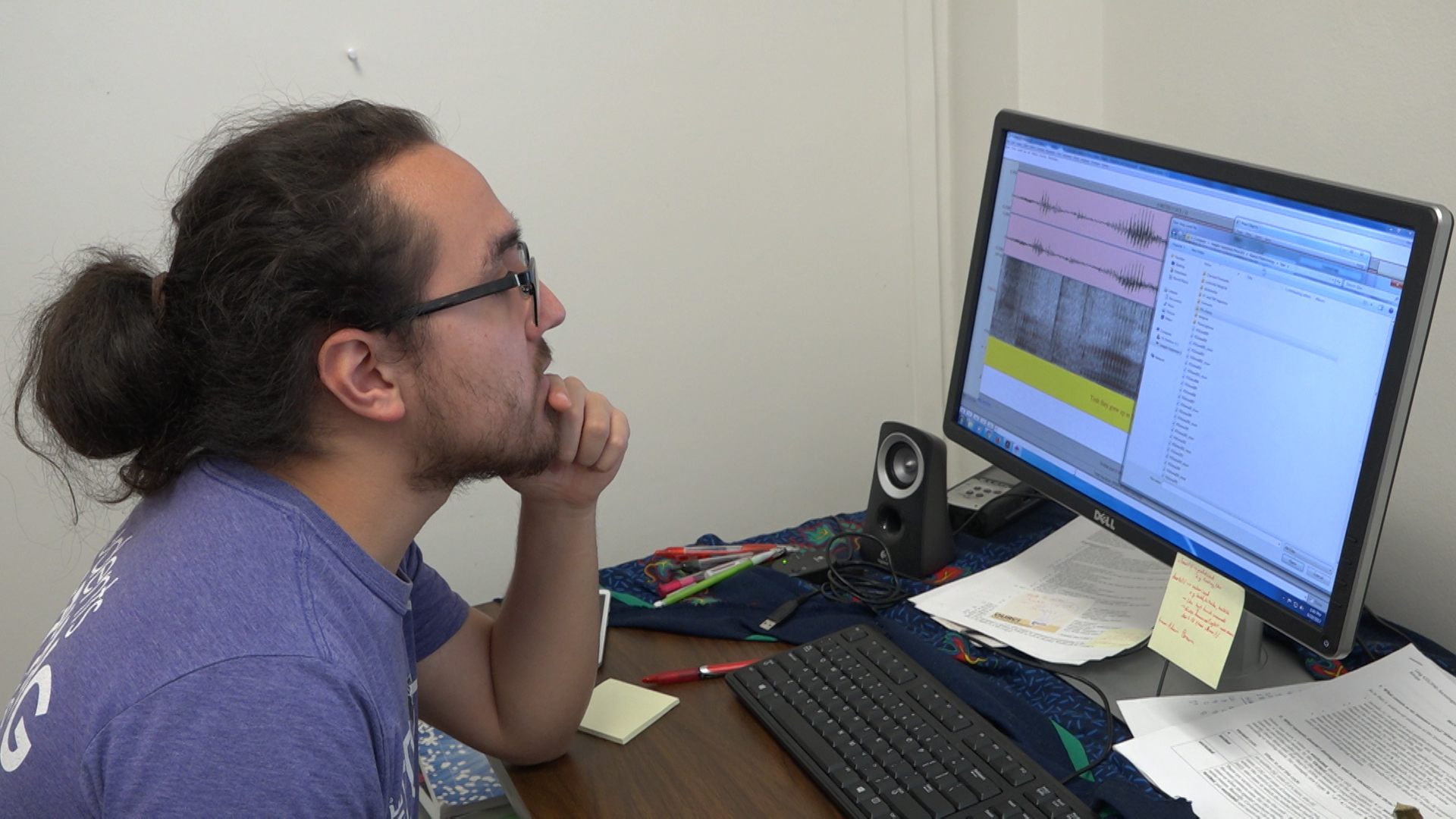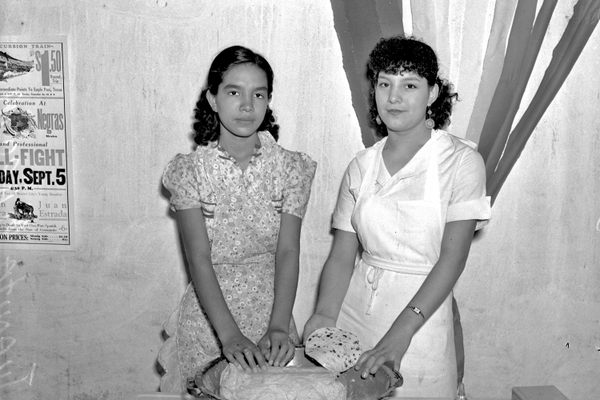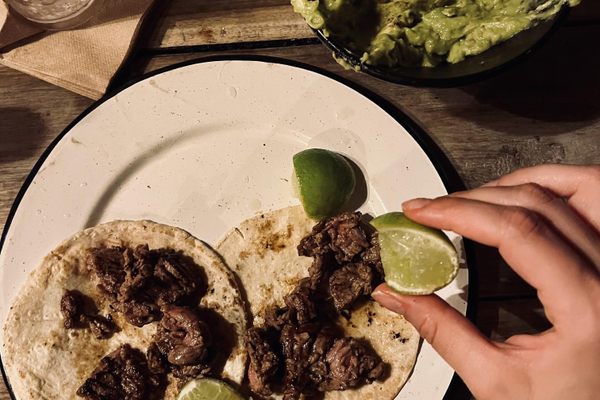A New Accent Is Developing in Southwest Kansas
The diverse young people of the town of Liberal are coming up with their own way to talk.

Say you’re a young person living in Liberal, Kansas—a small town in the southwestern part of the state, home to about 20,000 people—and someone you know does something fun without you. “I told my friends from Liberal that I had gone to Vancouver to present some research,” says Trevin Garcia, who just graduated from Kansas State University. “As soon as I said that, they were like, ‘Oh yeah, TFTI.’”
“TFTI”—pronounced “tifty”—stands for “Thanks for the invite,” Garcia explains. It’s used in a sarcastic way: “Someone does something that the other person would have liked to get in on, but didn’t find out until afterwards.” Ironically, he adds, it’s a bit of an exclusive phrase itself: “It’s very rarely that I find someone from outside of Liberal using TFTI.”
The kids from Liberal are doing something else unique, too. According to new research from KSU, they’re beginning to develop a distinctive new accent. Garcia and his advisor, linguist Mary Kohn, studied the speech of people from Liberal, and compared it with the speech of Kansans from other parts of the state. They found that, likely because of the increasing number of Hispanic residents, people in Liberal are now speaking English with certain Spanish inflections. This is true even of residents who don’t speak Spanish.

Garcia, who graduated from Kansas State University this past May, spent most of his young life in Liberal. “It’s a really interesting community, just because of how fast it went from being majority white to majority Hispanic,” he says. Kansas overall is quickly becoming more diverse, and meatpacking plants in the Southwest continue to draw many immigrants from Mexico. In 1980, 20 percent of Liberal’s residents were Hispanic; today, that number is 60 percent. “It’s a huge demographic shift in a really short amount of time,” says Garcia.
Garcia identifies as mixed-race himself—his mom is white and his dad is Hispanic. “Being that, and being in a community like that, helped me to notice something going on,” he says. “I’m always aware of the language I’m using with different groups of people.” So when he got to Kansas State University and started working with Kohn, he recommended they do some studies back in Liberal. “I knew we were interesting,” he says.
In other mixed communities around the United States, Kohn says, how people speak often has to do with their particular social affiliations—who you’re friends with, or what hobbies you have. Garcia and Kohn figured they’d find something similar in Liberal. For this reason, Garcia started by interviewing members of a few different high school sports teams with varying demographic makeups. “We were thinking that these teams—based on the ethnic groups that were participating in them—would sound different,” says Garcia.
Instead, “what we found was that they’re all really talking the same,” he continues. “It wasn’t what we were expecting at all.” Kohn agrees: “We would find these variants that we could associate with Spanish contact or language-learning processes in Liberal,” she says. “But we would find them not only among the Latinx youth but also among many of the white youth as well. It seems like these variants—because Liberal is now a Latinx-majority community—are just becoming the way this community sounds.”
So what does it sound like? Kohn and Garcia point to a couple of distinguishing features. The first has to do with vowel sounds. When they examined the speech of speakers from Liberal—Anglo and Latinx—“We found that there were aspects of the vowel system that looked like [those of] Latinx communities in other parts of the country,” says Kohn.
For example, in much of Kansas, a word like “hand” would be pronounced in the European-American way, with the tongue high up in the mouth. In Liberal, it might instead be pronounced with the tongue lower down, so that it rhymes with “hat.” (Kohn speaks more about this difference in this audio clip, and a speaker also demonstrates it in this one.)
The second has to do with rhythms of speech. Generally, English is what linguists call a “stress-timed language,” meaning that speakers tend to emphasize particular syllables within words. “If I say a word like ‘father,’ the first syllable is stressed—it’s louder and longer,” explains Kohn. Spanish, on the other hand, is more likely to have more evenly-timed syllables. Researchers have found that Latinx English-speakers often split the difference: “You can get sort of an intermediate rhythm,” says Kohn. This, too, is now prevalent in Liberal, with both Latinx and Anglo speakers. (You can hear one of their interviewees demonstrating it here.)
While certain of their findings are surprising, Kohn says, the existence of the accent isn’t. “From a linguist’s perspective, everyone has an accent,” explains Kohn. Neither is the fact that it’s changing: “Every generation uses language to construct their identities,” she says, adding that the only languages that don’t shift are dead ones.
“It was really fun to see that the way we talk is really not based on our ethnic backgrounds,” Garcia says. “All the young kids and kids my age—people who have grown up with a huge Hispanic presence—everyone’s talking the same, basically.”
Sometimes, he says, he hears himself using that lower-tongued A. “And I’ll be like, ‘Oh man,’” he says. “I really am from Liberal, aren’t I?’”











Follow us on Twitter to get the latest on the world's hidden wonders.
Like us on Facebook to get the latest on the world's hidden wonders.
Follow us on Twitter Like us on Facebook